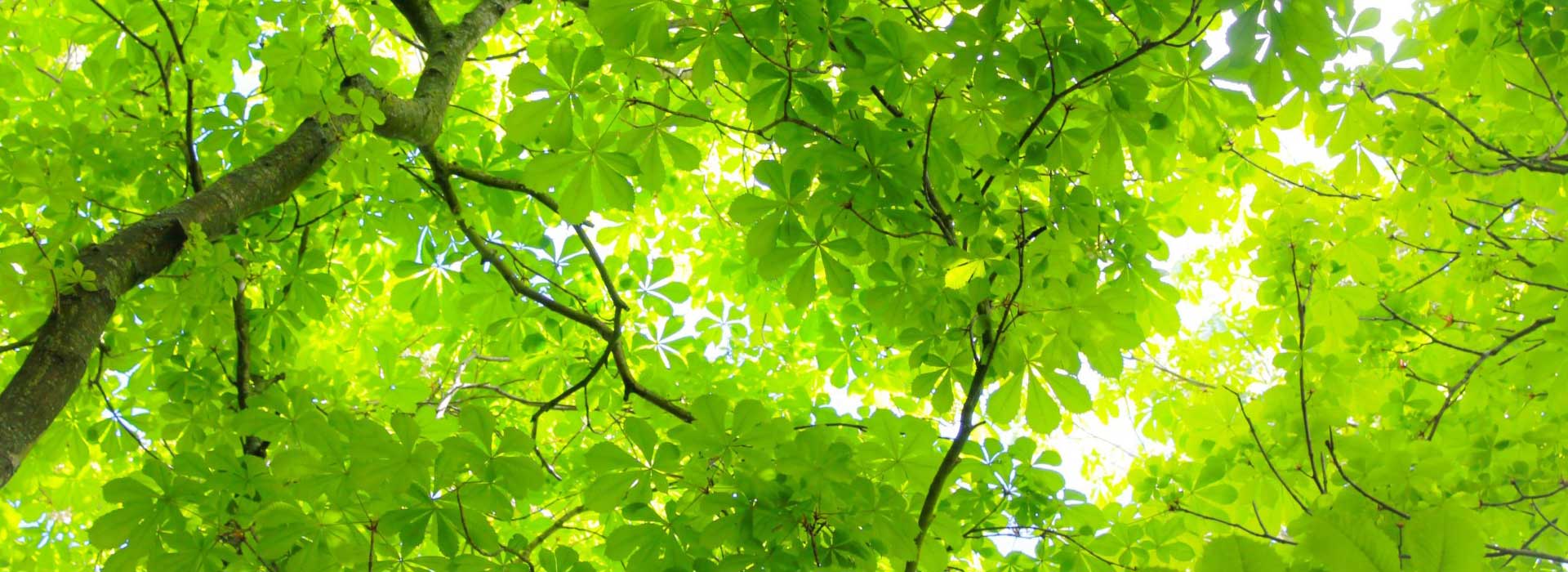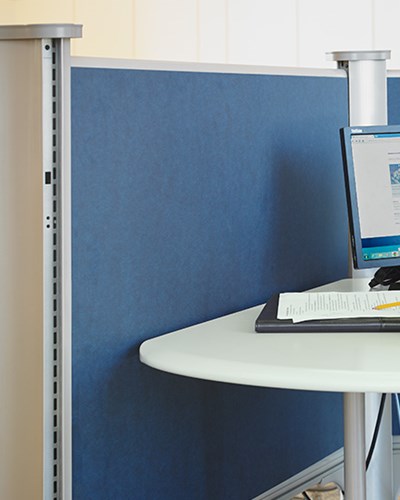
Sustainability Snippets
As part of our sustainability goals and focus on continuously improving our processes, we want to share our knowledge through educational content once a month. Follow us on our journey to a fact-based approach to sustainability.
Carbon neutrality is defined by a state where carbon emissions related to an activity are compensated by funding an equivalent in carbon savings elsewhere.
At Formica Group, reducing our carbon footprint is based on our core belief that it is the right thing to do. We are also convinced that reducing our overall environmental footprint is essential to the long-term success of our business and our environment. We aim to identify the drivers of sustainability and prioritize initiatives across the entire value chain – from raw materials through to consumers’ use of our products.
Efficiency upgrades are one of the first levers for improving a product’s environmental footprint since they reduce energy requirements and raw material inputs. Many opportunities exist to improve the energy efficiency of industrial equipment through the use of modern technology and intelligent system design. Replacing motors and pumps with new high-efficiency designs, storing and recycling heat within a closed-loop system, and optimizing the integrated manufacturing system are examples to reduce energy consumption.
At Formica Group, our goal is to increase process efficiency to reduce our overall energy consumption. Since 2019, we’ve implemented projects at our two manufacturing plants (Cincinnati, Ohio, and St-Jean-sur-Richelieu, Quebec) to increase the efficiency of our process. For instance, we use closed loop systems and optimal recycling of thermal energy across our process. In 2022, the total environmental impact of Formica Group North America’s panels emitted 31% less CO2 compared to baseline year (2019) emissions.
Changing a product’s raw materials usually involves replacing non-renewable inputs. Indeed, choosing materials from renewable sources leads to a reduction of CO2 emissions. For example, in industries such as packaging, environmental issues have driven the need for a shift in materials. Concerns about plastic pollution have led consumers to demand more environmentally friendly alternatives. In turn, this process has driven a rise in the use of biopolymers and biodegradable polymers, which are designed to replace traditional, petroleum-based plastics.
Source : How the manufacturing industry can minimize its carbon footprint (thefabricator.com)
At Formica Group, a large share of industrial emissions is associated with the creation of materials used in our products. A key opportunity exists to minimize material waste at each step in the process. Therefore, we are focusing on product and process designs that optimize the use of materials so that our finished product delivers outstanding performance while requiring less material input. Replacing the most impactful inputs normally translates into switching from fossil-based to bio-based and renewable options; however, it can also mean other things. Since 2019, we have focused on optimizing the use of raw materials through improvements in material yield, internal recycling, and revised product construction requiring less input materials.
Transparency is one of the key components consumers use to compare products and company initiatives. It’s important to consider the information, ask questions and only trust solid data.
At Formica Group North America, we consider transparency in our processes to be just as important as sustainability. That’s why we publish our Sustainability Position Paper annually to share our sustainability intentions with the public. For additional information, visit our Sustainability page.
The LCA, or life cycle assessment, methodology represents the most reliable and data-driven tool available to help companies, institutions, and governments systematically incorporate sustainability into their decision-making process. This method can evaluate the ecological burden related to the entire life cycle of a product, a process, or an activity. The LCA encapsulates the entire environmental footprint from raw material extraction to the disposal stage.
By using a product life-cycle approach, we get a clear understanding of the actual impact we have on the environment. We can then identify the drivers of sustainability and prioritize initiatives across the entire value chain – from raw materials through the consumer’s use of the product. Formica Group North America’s LCA assessment details results tied to three key environmental factors: global warming (CO2 emissions), primary energy demand, and water footprint.
A company can use different scopes when performing a life cycle assessment (LCA) of one of their products, processes, or activities. Cradle-to-gate is an assessment of a partial product life cycle from resource extraction (cradle) to the factory gate (i.e., before it is transported to the consumer).
Cradle-to-grave is an assessment of the full product life cycle from resource extraction (cradle) through to the use phase and disposal phase (grave).
Gate-to-gate focuses only on a product’s manufacturing process.
At Formica Group North America, we use the cradle-to-gate scope for our on-site life cycle assessments (LCAs) because we focus on the stages that are under our control and that we can influence. We can improve our processes to make them more efficient, and we can select less impactful raw materials. Moreover, for the life cycle stages beyond our factory gate, we have limited visibility and data as to the useful life and ultimate disposal of our products. We continue to closely monitor developing regulations on the potential for carbon storage benefits of long life cycle products at the end of their useful life.
Companies dedicated to sustainability should be constantly looking for ways to reduce their environmental footprint. One way to do so is through research and development and constant data analysis. That way they can stay up to date on recent discoveries like new raw materials, new ways to calculate emissions or even regulation change.
- Better understand our mass and energy flows/balances
- Measure our environmental impacts per standard unit of material, to establish a normalized measure for future improvements
- Identify the major environmental impact contributors in our process in order to set priorities for action
- Investigate a number of external activities to understand their potential of
Bio-based, renewable raw materials, have a lower environmental impact than traditional petroleum-based inputs. They, in fact, help to save fossil resources and can contribute to reducing greenhouse gas emissions. Forest and crops absorb CO2 from the atmosphere during their growth and continue storing it once harvested. To get a bit technical, trees absorb through the photosynthesis CO2 and solar energy in their wood creation and release oxygen in return. The CO2 absorbed is kept in the wood products for their whole life-time.
- FSC RECYCLED is a certification category that indicates the product is made from 100% recycled materials.
- FSC MIX is a certification category that indicates a product is made from a mix of materials, including FSC-certified wood, recycled materials, and/or controlled wood. This label provides a balance between supporting responsible forestry and utilizing recycled resources.
- CONTROLLED WOOD is a category that addresses the risk of wood from unacceptable sources entering the supply chain. It is not fully FSC certified but undergoes a risk assessment to ensure that it does not come from controversial sources, such as illegal logging or forests with high conservation value.
Formica Group North America takes a common-sense approach to sustainability. We acknowledge that, by definition, a product requires resources and energy in its creation and, as a result, some level of environmental impact will occur. That said, we relentlessly seek to maximize our product functionality while minimizing its environmental impact. We make extraordinary efforts to reduce the CO2 emissions generated by our products. Along with our internal improvement agenda, we plan to offset our CO2 emissions with high-quality carbon credits. We recognize carbon neutrality is a long journey and there will be significant learnings along the way. As we move forward with this process, we’ll leverage our experience to update our approach, targets, and timelines.
We believe that sustainability is a balancing act between product functionality and product impact. Our goal is to reduce impacts without losing sight of the product functionality our clients require.
Formica Group North America has set an ambitious goal of becoming carbon neutral by 2030. By 2026, we’ll have completed half of our sustainability program. By that point, we’ll have:
- Reduced our CO2 emissions by at least 25%
- Used 5% less water in our manufacturing processes
- Reduced our primary energy demand by at least 10%
We’ll pursue our goal by improving our efficiency (in material and energy use) and replacing the most impactful inputs. Our path towards carbon neutrality reflects the combined impact of our internal improvement measures and carbon offset compensation to help balance our emissions. In addition to buying carbon offsets, we’ve initiated efforts to identify and select projects to further reduce our carbon footprint and will report on these efforts in future position papers.
We believe it’s vitally important to get started on this journey now by initiating the hard work of creating a more sustainable business and becoming a leading steward of a better environment.
One of the key component of sustainability is reliable and transparent data. The accuracy of an LCA (Life Cycle Assessment) model is entirely dependent on the data available; ensuring their quality should be at forefront of a company's priorities. In LCA, there is a clear distinction between data collected on site (primary data) and sourced from third parties (secondary data), with the former preferred over the latter.
At Formica Corporation, during the next five years, we will continue to put effort toward increasing the breadth and accuracy of data collected in our plants. Given the significant role that raw material play in our products’ LCA, we plan to continue to refine our data and collect inputs directly from our paper and chemical suppliers to further improve the specificity and accuracy of that data. Combined, the end goal is to develop and maintain a highly accurate and actionable LCA model for our products. Moreover, for the life cycle stages that are after our factory gate, we have limited visibility and data as to the useful life and ultimate disposal of our product (making estimates difficult). We continue to closely monitor developing regulations on the potential for carbon storage benefits of long life cycle products at the end of their useful life.
At Formica Group North America, we create EPDs for each product type and thickness. Our EPDs are third-party verified, and we are accredited to create our own EPDs through Nemho – our research and development center of excellence based in the Netherlands. Our available EPDs include, but are not limited to, Formica® Laminate grades 12 and 20, HardStop® Decorative Protection Panels, Everform® Solid Surface, ColorCore® 2 Laminates, and more. Visit Formicadocs.info to access our sustainability documentation.
The laminate manufacturing process consists of two main stages: paper impregnation and pressing. Of course, several steps are required before impregnating the paper and after pressing it to obtain the high-pressure laminate that you may be more familiar with, such as cutting the paper to the required length and stacking it to the desired thickness. Overall, though, paper impregnation and pressing represent the main stages. To reduce carbon emissions from the laminate manufacturing process, improvements in these two stages are essential, as well as optimizing the raw material extraction process or using bio-sourced resins.
Formica Group North America has undertaken an energy optimization project involving its presses at our St-Jean-sur-Richelieu (Quebec, Canada) facility. To this end, we sought to reduce steam demand and address inefficiencies in the plant's thermal power station operation by reducing heating requirements and optimizing controls. As part of the project, water collection tanks were installed to store hot water used in the laminate thermosetting process for reuse in the next curing cycle. These storage tanks help retain more energy in the system and significantly reduce the demand for steam from the boilers. Since the water returning to the boilers for the next cycle is hotter, less energy is required to produce steam. As a result, we’ve achieved an estimated 12% reduction in natural gas use annually, leading to a decrease in CO2 emissions.
Launched in 2002, the USDA’s Biopreferred Program focuses on increasing the prevalence of biobased products in the market. Biobased materials are derived from plants or other renewable sources versus nonrenewable petroleum-based products. The environmental impact of biobased offerings includes the ability to sequester carbon dioxide, which is important for reducing greenhouse gases in the atmosphere. To ascertain the biobased content of a product, businesses submit a sample of a product to the USDA laboratory for testing. If the product meets the necessary criteria, it can be certified as biobased and display the USDA Certified Biobased Product label.
At Formica Group, we are dedicated to supporting a healthier environment at every stage of producing our iconic surfacing products. As such, the USDA’s BioPreferred Program certified Formica® Brand Laminate and Formica® Compact Structural Phenolic Panels each to contain 72% biobased content. This high percentage indicates to our customers that these products are a sustainable choice for interior design. In fact, we took the approach of assessing the biobased content in our products using the thinnest option for both Formica® Brand Laminate and Formica® Compact Panels. In this way, we know related products have a similar or higher amount of the bio-rich core layer. This underscores our commitment to transparency not only in the results we share, but also in the details of how we approached the certification and testing process.
The Living Building Challenge (LBC) Red List represents the “worst in class” materials, chemicals, and elements known to pose serious risks to human health and the greater ecosystem that are prevalent in the building products industry.
The Declare label is a nutrition label for building products. It is designed to help specifiers quickly identify products that meet their project requirements. Declare labels disclose all intentionally added ingredients and residuals at or above 100 ppm (0.01%) present in the final product by weight.
A product’s compliance with the LBC Red List is represented on the Declare label by the product’s Declaration Status. There are three Declaration Statuses: Red List Free, Red List Approved or Declared.
- LBC RED LIST FREE products disclose 100% of ingredients present at or above 100 ppm (0.01%) in the final product and do not contain any Red List chemicals.
- LBC RED LIST APPROVED products disclose a minimum of 99% of ingredients present in the final product and meet the LBC Red List Imperative requirements through one or more approved exceptions.
- DECLARED products disclose 100% of ingredients present in the final product, but contain one or more Red List chemicals that are not covered by an approved exception.
At Formica Corporation, we continually strive to create innovative products that support sustainable design and contribute to a healthier environment. In addition to our long-term corporate goals, Formica® Brand surfaces have achieved many third-party standards for sustainable materials. As part of our commitment to transparency and pursuit of the most stringent sustainability assessment, we are proud to provide a Red List Approved label for our renowned Formica® laminates and FENIX® innovative materials. We are delighted to announce that Everform® Solid Surface has been awarded a Red List Free label. To view our certificates, please visit www.Formicadocs.info.



